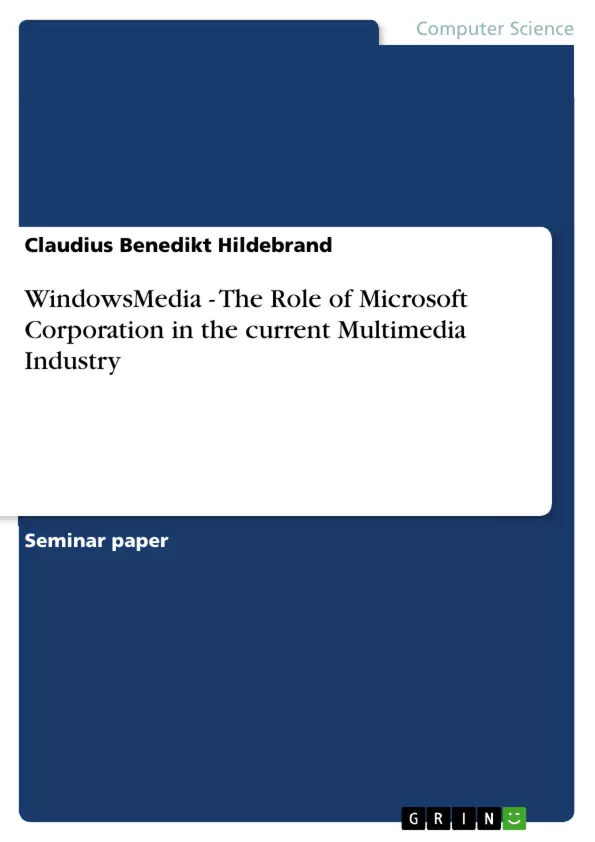This report will evaluate the role of Microsoft Corporation in the current multimedia industry. In order to get an impression about Microsoft’s business, there is an overview of Microsoft’s products and services at first. Next, it will be Microsoft’s strongest competitors in the operating system market as most consumers of multimedia services have a Windows operating system which included a player for multimedia content. This player called Windows Media Player is being discussed and compared to the RealNetworks’ RealOne player which is regarded as one of Microsoft’s strongest competitors in the multimedia business. Consecutively, there is an investigation of electronic devices currently supporting the technology provided by Microsoft including different audio- and video codecs. Finally, there is a conclusion showing the results of the research and giving some recommendations when deciding which multimedia environment to choose: Microsoft or RealNetworks.
Inhaltsverzeichnis (Table of Contents)
- Introduction
- What is Multimedia?
- Microsoft, the leading Multimedia Company?
- Procedure and Analysis Objectives
- Key features of the Multimedia Industry
- Microsoft's main business activities
- Microsoft's competitors
- Microsoft's effort in the Multimedia Industry
- Current software applications used in the Multimedia Industry
- Windows Media Series
- Windows Media Encoder
- Windows Media Services
- Windows Media Player
- Windows Media Rights Manager
- Windows Media SDK
- Comparison - Windows Media Player vs. RealOne
- Windows Media Series 9 - Corona
- Windows Media Series
- Current technologies used
- Supported Software/Hardware Platforms
- Portable Devices
- Windows Media 8 Codec vs RealMedia 8 Codec
- Open vs. proprietary standards
- Conclusion
Zielsetzung und Themenschwerpunkte (Objectives and Key Themes)
This report aims to assess the role of Microsoft Corporation in the contemporary multimedia industry. It analyzes Microsoft's products and services, their competitors in the operating system market, and specifically the Windows Media Player and its comparison with RealNetworks' RealOne player. The report also examines electronic devices supporting Microsoft's technology, including audio and video codecs, and concludes with insights and recommendations for choosing a multimedia environment.
- Microsoft's role in the multimedia industry
- Comparison of Windows Media Player with competing technologies
- Analysis of current technologies used in multimedia
- Open and proprietary standards in the multimedia industry
- Recommendations for choosing a multimedia environment
Zusammenfassung der Kapitel (Chapter Summaries)
The introduction defines multimedia and explores Microsoft's position as a leading multimedia company. It outlines the report's objectives and analysis methods.
Chapter 2 examines key features of the multimedia industry, including Microsoft's main business activities, their competitors, and their involvement in the multimedia sector.
Chapter 3 focuses on current software applications used in the multimedia industry, including the Windows Media Series, its components, and a comparison with RealOne player. It also introduces the upcoming Windows Media Series 9, code-named Corona.
Chapter 4 delves into current technologies used, including supported software and hardware platforms, portable devices, comparisons between Windows Media 8 and RealMedia 8 codecs, and the discussion of open versus proprietary standards.
Schlüsselwörter (Keywords)
This report focuses on key concepts such as multimedia, Microsoft Corporation, Windows Media Player, RealNetworks, RealOne player, software applications, multimedia codecs, open standards, proprietary standards, and the role of Microsoft in the multimedia industry.
- Quote paper
- Claudius Benedikt Hildebrand (Author), 2002, WindowsMedia - The Role of Microsoft Corporation in the current Multimedia Industry, Munich, GRIN Verlag, https://www.grin.com/document/6346



